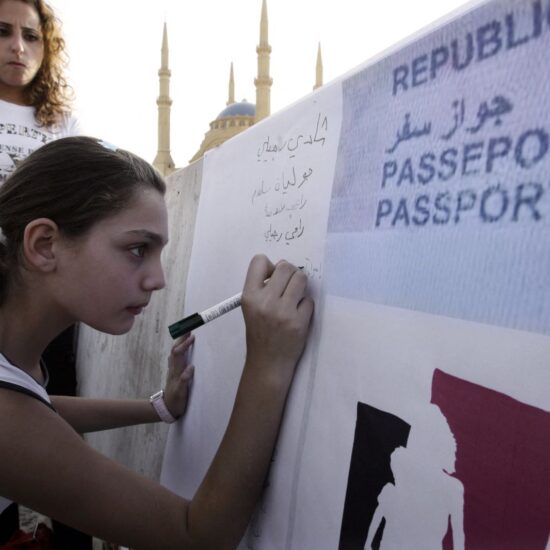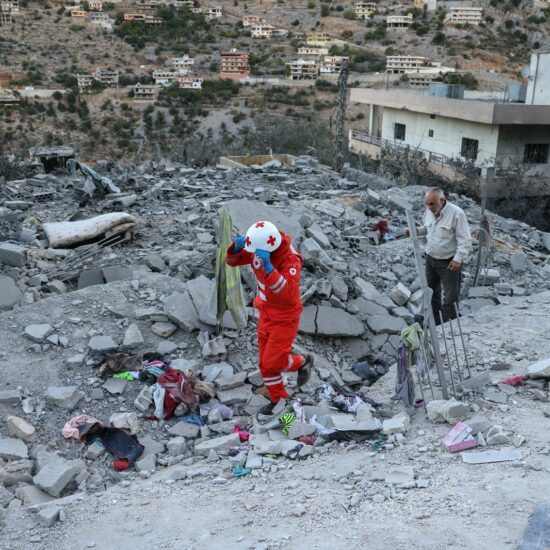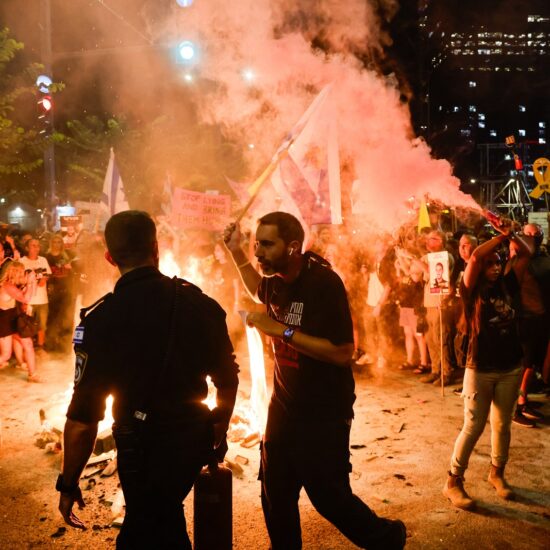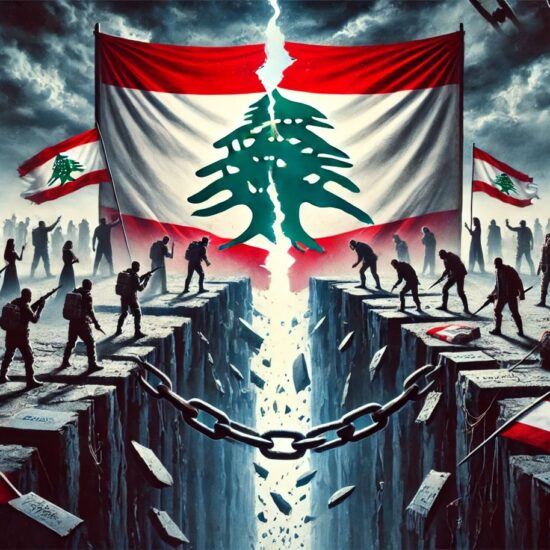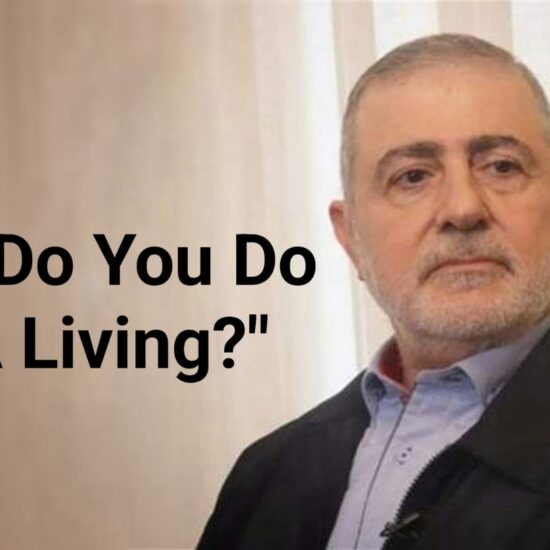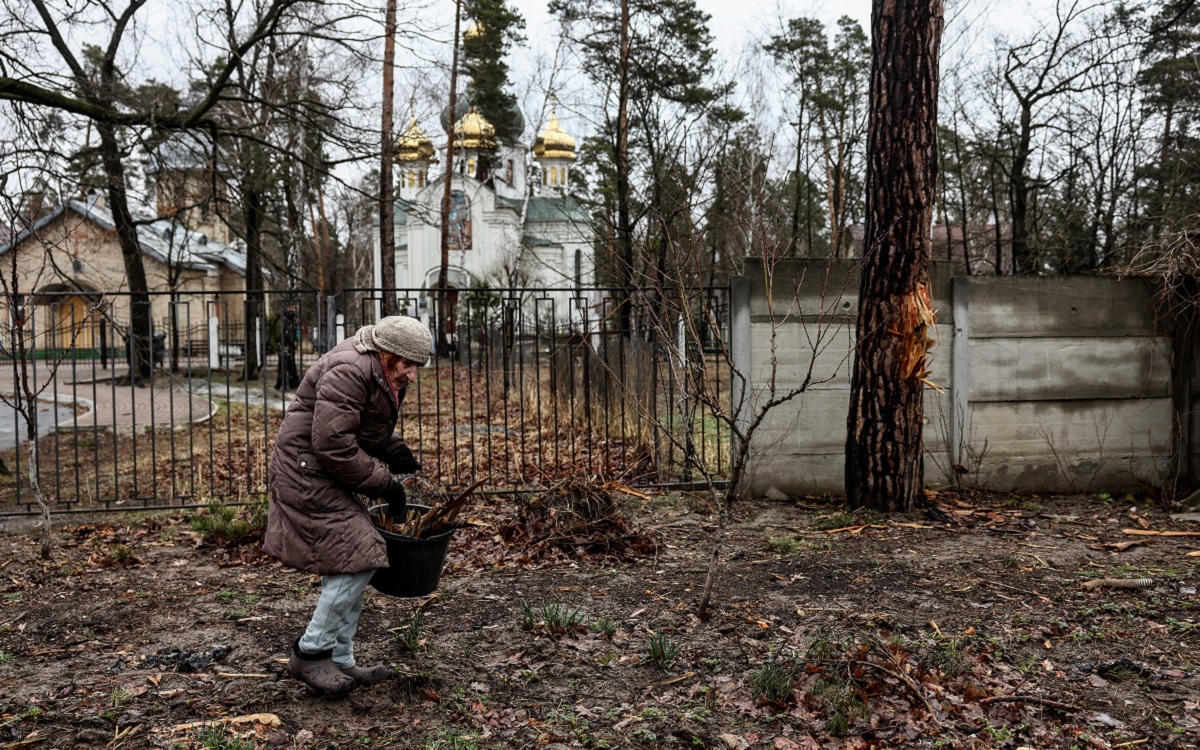
Over the weekend, Ukrainian troops entered the Kyiv suburb of Bucha, and what they found was horrifying.
Russian forces recently announced their withdrawal from the suburbs of Ukraine’s capital city, allowing the Ukrainians to move in. Videos uploaded to social media revealed what the Russians had left behind. Throughout the streets of the city, decomposing bodies were strewn along the roads with their hands tied behind their backs.
Bucha’s mayor said that those killed were innocent civilians and the Russians had massacred the men of the city during their month-long occupation, leaving their bodies in mass graves or laying out in the street.
On March 27, a video emerged of what looked like Ukrainian soldiers abusing Russian prisoners of war. In the video, soldiers berate injured and bound men, eventually shooting three of them in the leg.
The scenes are brutal and unfortunate reminders of the horrors of war. The Ukrainian government has acknowledged the incident and said it would investigate, but who knows if this will bear any fruit.
First and foremost the crime must be proven. The Russian invasion of Ukraine has generated an incredible amount of disinformation, and thus the video first must be confirmed to be real. The location and identity of the perpetrators must also then be investigated and revealed. Finally, it must be determined whether this abuse was an individual incident or systematic.
Regardless of the side that perpetrated the crime, all atrocities, such as massacres and the abuse or torture of prisoners, must be rigorously investigated, and those involved must be held accountable. This is the case for every conflict.
However, to avoid being swept up in the fervor of disinformation, one must take a sober look at a variety of factors when evaluating conflicts. One must consider which side perpetrated the most crimes and were they systematic, which side had the physical capacity to commit crimes, and the nature of the crimes themselves.
There are three specific conflicts that demonstrate how atrocities can be dealt with. The Balkan wars of the 1990s, the Syrian civil war, and the Lebanese civil war are different in many ways, but they all featured widespread war crimes and human rights abuses.
In Syria and the Balkans, one side committed the most heinous crimes and perpetrated the majority of atrocities in the conflict, while in Lebanon this distinction is far more difficult to evaluate.
The disintegration of Yugoslavia and the ICTY
The breakup of Yugoslavia, which began in the early 1990s, was one of the bloodiest conflicts in Europe since the Second World War. With the death of Yugoslavia’s long-time leader, Josef Broz Tito, and the collapse of the Soviet Union, the republics that made up Yugoslavia began to agitate for independence.
By this time, Yugoslavia had become dominated by Serbia and its Serbian-nationalist leader, Slobodan Milosevic, who viewed the breakup of Yugoslavia to be an existential threat, especially to Serbs living in Bosnia, Croatia, and Kosovo. War in Croatia eventually broke out in 1991, while in Bosnia it began in 1992.
In that time, countless atrocities were committed, including mass rape, the intentional targeting of civilians, abuse of prisoners, ethnic cleansing, and even genocide. All sides in the conflict committed atrocities, but Serbian forces and Serbian backed militias committed the majority of those atrocities and the worst.
In 1993, the UN established the International Criminal Tribunal for the former Yugoslavia (ICTY) as the atrocities continued to mount. The ICTY sought to hold the perpetrators of these atrocities accountable for the terrible crimes they committed during the wars.
Though the ICTY was imperfect in many ways, it managed to investigate and prosecute war criminals from all sides in the conflict, indicting 161 individuals and eventually sentencing 91. Those prosecuted skewed towards the Serbian side of the conflict, but that was the side that committed the most and worst atrocities, such as genocide.
The ICTY, as well as national courts prosecuting war crimes in all the former Yugoslav republics, have become a benchmark for transitional justice.
The case of Syria
The Syrian civil war has been one of the most bloody and brutal conflicts of the 21st century. Much like the Balkans, all sides in the Syrian civil war have committed terrible crimes, including the intentional targeting of civilians, torture, and mass murder. And much like the breakup of Yugoslavia, one side in the war has committed the majority and worst crimes in the conflict.
In 2011, Syria was engulfed by Arab Spring protests that broke out across the country. The government quickly responded to the uprising with tanks, artillery, and helicopters, brutally dispatching those who took to the streets calling for the fall of the regime. By 2012, the situation escalated into a full-scale civil war that continues to this day.
An important element of the war in Syria has been the capacity to commit crimes. Even if the rebels and the Islamic State, for instance, had wanted to commit large-scale atrocities, like flatten an entire city or use chemical weapons, they never had the capacity to do so.
The government on the other hand had the capacity to drive millions from their homes via the use of fixed-wing aircraft, helicopters, armored vehicles, artillery, and chemical weapons. With time, anti-government forces had access to formidable weapons, such as armored vehicles and artillery, but not nearly the quantity that the government had.
Access to weapons of war is a strong indicator of determining which side in a conflict has the actual capacity to carry out atrocities.
Russia is currently in the process of leveling Ukrainian cities while there have been a few videos of Ukrainian soldiers abusing Russian POWs. This, of course, does not excuse those crimes, but the important matter is whether they were sanctioned by high-level officials, and are thus systematic.
This is not to say that crimes committed by the rebel factions, Islamic State, or Kurdish forces are any less atrocious or brutal than those committed by the government. Rather, the scale was different. These sides in the conflict simply could not cause the widespread death and suffering that the government was able to perpetrate.
Regarding the actual investigation and prosecution of atrocities committed during the war in Syria, it is far more difficult to actually indict the individuals who committed them. The government is still in power and does not seem to be going anywhere for at least the short-term. Foreign intervention has also made things quite difficult.
In the Balkans, NATO officially intervened in the conflict for largely humanitarian reasons, even if those reasons also overlapped with its geopolitical interests. Russia threatened to intervene, but in the end it did not.
In Syria’s case, Russia, Iran, Turkey, the Gulf, and the US all intervened in the conflict, protecting their respective sides from being prosecuted. IS’s leaders have been killed, captured, or in hiding; rebel leaders are protected, at least tacitly, by Turkey; Kurdish forces are protected by the US; and the government is still in power and protected by Russia.
Notably, there have been some cases against war criminals from Syria. In recent months, a former colonel in the government’s security services was sentenced to life in prison in Germany for murder, rape and crimes against humanity. A pro-government “doctor” who tortured prisoners in Homs also stood trial in Germany for human rights abuses.
Some IS members have also stood trial, with El Shafee Elsheikh, accused of taking part in the brutal murder of James Foley, among others, beginning his trial in the US state of Virginia on March 30.
The problem with these cases is that they are being undertaken by individual countries and not by an international organization like the International Criminal Court (ICC) in The Hague (which would require a unanimous vote in the UN Security Council). They also are not rigorous enough, as, for instance, there are thousands of IS prisoners facing indefinite detention in eastern Syria who need to be properly processed and repatriated to their home countries.
The Lebanese civil war and amnesties
The Lebanese civil war is similar to both Syria and the Balkans in a variety of ways. Atrocities were committed by all sides, and foreign intervention was a staple of the conflict. What makes Lebanon’s civil war different is the general amnesty enacted at the end of the war.
The conflict started in 1975 when clashes between largely right-wing and left-wing militias exploded in Beirut. The war dragged on for 15 years, with both Syria and Israel invading Lebanon at different points in the conflict. Much like Syria and the Balkans, the war became a struggle between different ethno-religious groups as the conflict progressed.
Ending around 1990, the war concluded with a general amnesty that gave militia leaders a clean slate. Amnesties are not uncommon in conflict resolution, and there is logic in applying them. Exchanging justice for peace, amnesties allow combatants to feel comfortable putting down their weapons, as they know they will not face consequences for their actions.
Though amnesties can be effective in ending conflicts, they rob the victims of war crimes and human rights abuses of closure. It can also be a major hurdle in national reconciliation.
In Lebanon, the wounds of the civil war are still fresh and contribute to some of the deep fissures that remain between different communities. Indeed, it is no coincidence that last year’s clashes in Beirut occurred along a street that used to be the demarcation line between opposing militias during the civil war.
The amnesty did help put an end to the fighting, but it also has greatly contributed to Lebanon’s current political problems and divisions.
Evaluating crimes in Ukraine
The most important difference between Ukraine and the other conflicts mentioned here is the fact that the war in Ukraine is between two states and not between intrastate factions.
In this case, a general amnesty like in Lebanon does not make sense, as the international community does not necessarily need to incentivize the belligerents to put down their weapons in such a way.
Instead, something similar to the ICTY for the Balkans would be more useful. However, the problem with actually enacting this sort of tribunal is similar to Syria.
An international body could hold both sides accountable for atrocities committed in the conflict, but it could be rather difficult to actually apprehend war criminals given the fact that the Russian government under Vladimir Putin will likely stay in power. The ICTY was able to move forward in the Balkans because Serbia’s government under Slobodan Milosevic was overthrown, and its members accused of war crimes were extradited to the ICTY.
Much like Syria, it is very difficult to prosecute war criminals when they are still in power and being protected by foreign actors.
Vladimir Putin is safe as long as he is in power, and, to some degree, so is Ukraine’s leadership. If Ukraine’s president, Volodymyr Zelensky were to be captured by Russian forces, he would likely be tried and convicted for war crimes in Russia, even if there was no evidence to support the conviction.
In this instance, the common adage, “history is written by the victors,” comes to mind.
Regardless of the side that perpetrated the crime, all atrocities, such as massacres and the abuse or torture of prisoners, must be rigorously investigated, and those involved must be held accountable. This is the case for every conflict.
Crimes committed by the Ukrainian side have not been shown to be as systematic as they may be from the Russian side. Russia is currently in the process of leveling Ukrainian cities while there have been a few videos of Ukrainian soldiers abusing Russian POWs. This, of course, does not excuse those crimes, but the important matter is whether they were sanctioned by high-level officials, and are thus systematic.
Western governments would likely overlook most individual acts of brutality as long as they are not deemed to be systematic in nature.
This was a common criticism of the ICTY, with detractors saying it overlooked crimes committed by factions supported by NATO. And to some degree, this was the case.
As stated earlier, Serbian forces committed the majority of the crimes in the Balkans, thus why they were overrepresented in the ICTY. However, there definitely could have been a stronger effort to prosecute Croatian and Kosovar war criminals who were supported by NATO.
Both Ukraine and Russia have the capacity to commit large-scale war crimes, but as of now, it looks like Russia has been the main perpetrator. During the last eight years of war in the Donbass, Ukrainian forces shelled civilian areas, and they should be held accountable for this, but they never leveled entire cities as the Russians are doing right now.
Indeed, evidence is now coming out of Russian massacres in the suburbs of Kyiv, with terrible videos of the bodies of executed men decomposing in the streets of Bucha.
The war in Ukraine is another tragic example of the limits of conflict resolution and the international community. Though in a perfect world, both Russian and Ukrainian war crimes would be prosecuted, this will likely not be the case given the circumstances.
All one can hope for is that the war will end as soon as possible.
David Isaly is a journalist and researcher with @NOW_leb. He tweets @DEyesalli.



